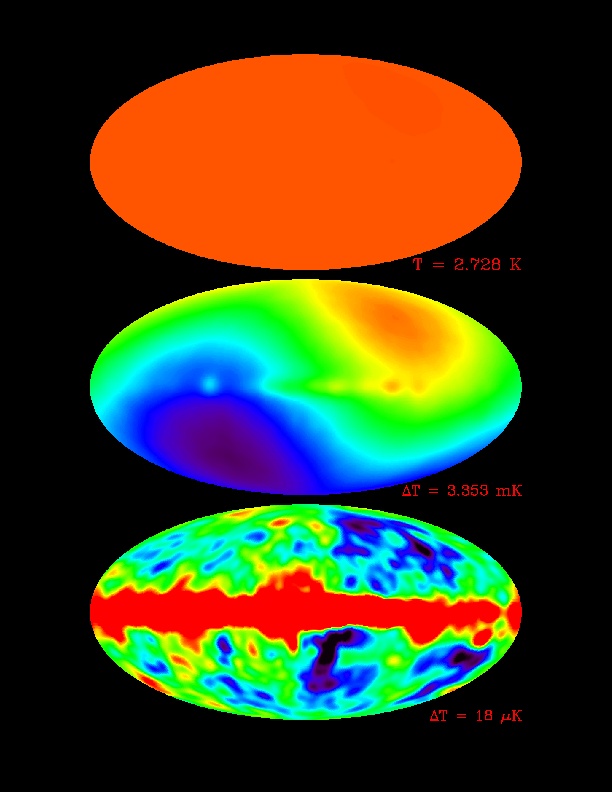COBE - 53GHz DMR Map of CMB Anisotropy


The image represents DMR data from the 53 GHz band on a scale from 0° to 4°K,
showing the near-uniformity of the Cosmic Microwave Background (CMB) brightness (top),
then on a scale intended to enhance the contrast due to the dipole component (middle),
and following subtraction of the dipole component (bottom).
The dipole, a smooth variation between relatively hot and relatively cold areas, from the upper right to the lower left, is due to the motion of the Solar System relative to distant matter in the Universe. The signals attributed to this variation are very small, only one thousandth the brightness of the sky.
The bottom image shows the reduced map (i.e., both the dipole and Galactic emission subtracted).
The cosmic microwave background fluctuations are extremely faint,
only one part in 100,000 compared to the 2.73° Kelvin average temperature of the radiation field.
The cosmic microwave background radiation is a remnant of the Big Bang
and the fluctuations are the imprint of density contrast in the early Universe.
The density ripples are believed to have given rise to the structures that populate the Universe today:
Clusters of galaxies and vast regions devoid of galaxies.
A higher resolution version of this image can be found at
Cosmic Background Experiment (COBE) DMR Images
John C. Mather and George F. Smoot, Nobel Prize in Physics 2006
(Nobel Foundation)
See
The Nobel Prize in Physics 2006
(.pdf).
![]() Updated: October 3 '06
Updated: October 3 '06
Best seen with MS Internet Explorer.
Back to: The Cosmic Microwave Background - A Relic from the Origin of the Universe (COBE - 53GHz DMR Map of CMB Anisotropy)